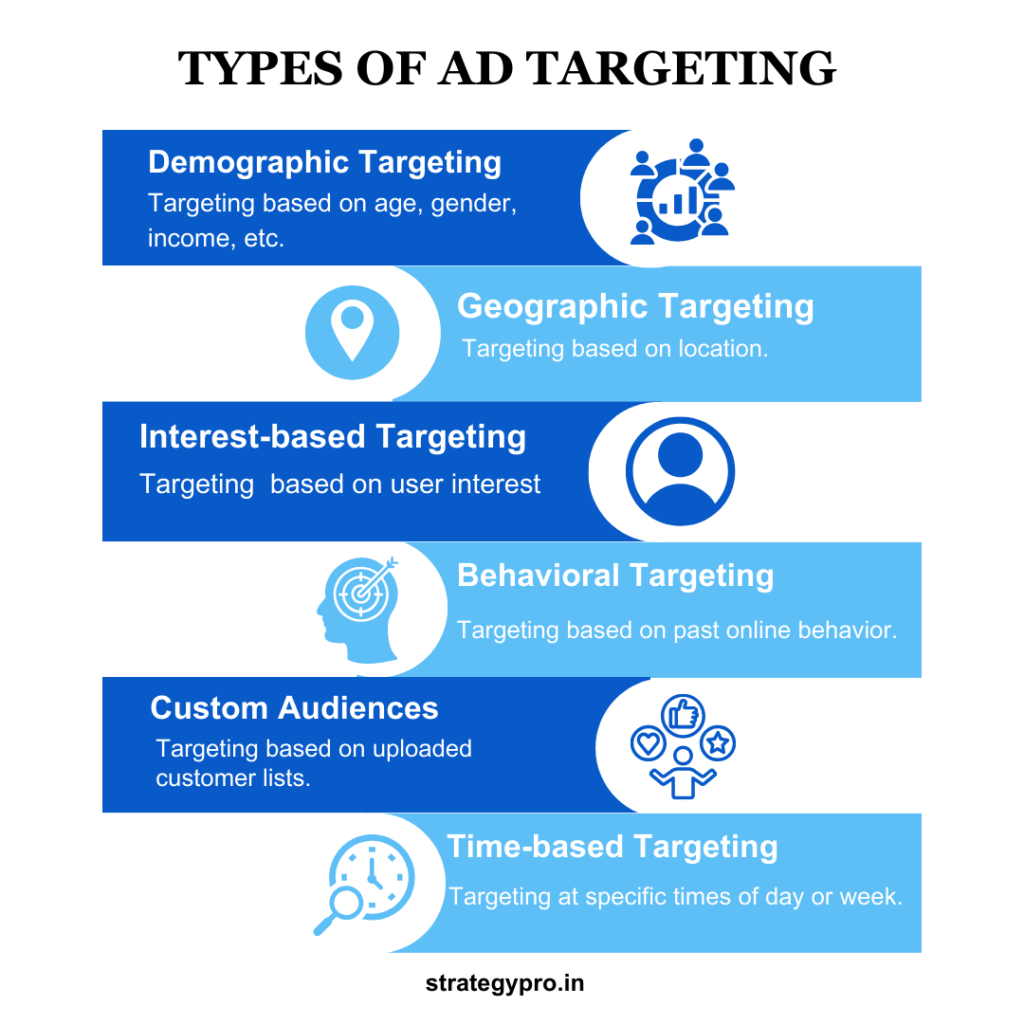
Mastering Ad Targeting: Reach Ideal Customers
- By admin
In the vast sea of digital marketing, the ability to effectively reach your target audience is paramount. This is the point where ad targeting becomes crucial. Ad targeting is a strategic approach that allows businesses to tailor their advertisements to specific demographics, interests, behaviors, and more. By understanding the nuances of ad targeting, businesses can connect with their ideal customers more effectively, leading to higher engagement, conversions, and ultimately, business success. In this article, we’ll delve into the fundamentals of ad targeting and explore how it can help businesses reach their ideal customers.
What is Ad Targeting?
Ad targeting, also known as audience targeting, is the practice of delivering advertisements to a specific group of people based on various criteria such as demographics, interests, behavior, and location. Rather than deploying a one-size-fits-all marketing approach, ad targeting enables businesses to tailor their messages to specific audience segments, increasing the relevance and effectiveness of their advertising efforts.
How Does Ad Targeting Work?
Ad targeting relies on data collected from various sources, including website analytics, social media platforms, and third-party data providers. This data is used to create detailed profiles of target audiences, allowing businesses to identify the individuals most likely to be interested in their products or services. Advertisers can then use this information to deliver personalized advertisements to these audience segments across various channels, including search engines, social media platforms, websites, and mobile apps.
Supercharging Your SEO Efforts with Targeted Ads:
Search engine optimization (SEO) is essential for enhancing your website’s presence in search engine results pages (SERPs). However, complementing your SEO strategy with targeted ads can yield even greater results. By bidding on relevant keywords and incorporating them into your ad campaigns.
Harnessing the Power of Social Media Marketing and Ad Targeting:
Social media platforms are a goldmine for ad targeting, thanks to the wealth of user data they collect. Whether you’re advertising on Facebook, Instagram, Twitter, or LinkedIn, you can leverage advanced targeting options to reach highly specific audience segments.

Types of Ad Targeting:
Demographic Targeting:
This entails directing ads towards specific demographic elements like age, gender, income, education level, and marital status.
Interest-Based Targeting:
Interest-based targeting focuses on delivering ads to individuals based on their interests, hobbies, activities, and online behaviors.
Behavioral Targeting:
Behavioral targeting involves targeting ads based on users’ past behaviors, such as websites visited, content viewed, purchases made, and interactions with ads.
Geographic Targeting:
Geographic targeting allows businesses to deliver ads to users based on their location, such as country, state, city, or postal code.
Benefits of Ad Targeting:
Improved Relevance:
By targeting ads to specific audience segments, businesses can deliver more relevant and personalized messages, increasing the likelihood of engagement and conversions.
Increased ROI:
Ad targeting helps businesses allocate their advertising budgets more efficiently by focusing on the audiences most likely to convert, resulting in a higher return on investment (ROI).
Enhanced Engagement:
Personalized ads are more likely to capture the attention of consumers and encourage them to take action, whether it’s clicking on an ad, visiting a website, or making a purchase.
Better Insights:
Ad targeting allows businesses to gain valuable insights into their target audience’s preferences, behaviors, and purchasing habits, which can inform future marketing strategies and campaigns.
Best Practices for Effective Ad Targeting:
Understand Your Audience:
Invest time in researching and comprehending the demographics, interests, and behaviors of your target audience to develop comprehensive audience profiles.
Use Multiple Targeting Criteria:
Combine multiple targeting criteria, such as demographics, interests, and behaviors, to create highly targeted audience segments.
Test and Optimize:
Continuously monitor and analyze the performance of your ad campaigns, and make adjustments based on real-time data to optimize targeting and maximize results.
Stay Compliant:
Ensure that your ad targeting practices comply with relevant regulations, such as GDPR and CCPA, to protect consumer privacy and avoid potential legal issues.
In conclusion, ad targeting is the compass guiding businesses through the vast digital landscape. At StrategyPro, we wield this compass with finesse, charting a course that leads to meaningful connections and tangible results. By navigating through demographics, interests, behaviors, and locations, we craft personalized campaigns that captivate audiences and drive success. With StrategyPro at the helm, your journey to advertising excellence is destined for smooth sailing.
